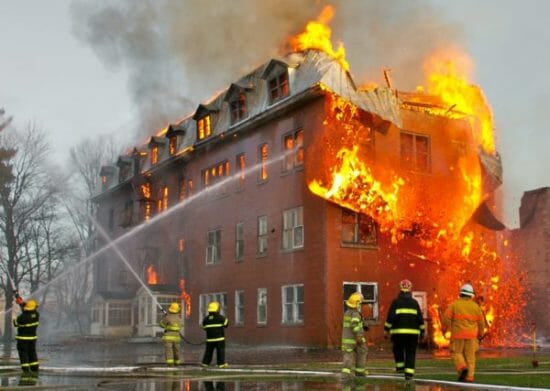- Course No E – 1262
- PDH Units 3.00
No data found for Custom Course Number
No data found for Custom Course Units
- Course No E – 1262
- PDH Units 3.00
Intended Audience: Architectural, civil, structural, mechanical and electrical engineers engaged in the design of buildings
PDH UNITS: 3
This course will introduce you to fire protection engineering fundamentals related to building materials and design, water supply for fire protection, fire extinguishing systems, fire alarm systems, special occupancies and hazards, and storage of flammable and hazardous materials. You will be introduced to the basics of using occupancy hazard classification for determining sprinkler densities and hose streams, procedures for determining fire flow demand for unsprinklered facilities, and procedures for performance based fire safety design. Course Outline I. The five fundamental elements of fire protection engineering A. Building materials and design B. Water supply for fire protection C. Fire extinguishing systems D. Fire alarm systems E. Special occupancies and hazards II. Building materials and design A. Basic criteria B. Fire areas C. Height limitations D. Interior fire spread E. Egress F. Interior finishes G. Insulation H. Roof coverings I. Roof and fire department access J. Air handling K. Plastic pipe and conduit L. Fire retardant wood products III. Water supply A. Demand for sprinklered facilities B. Demand for unsprinklered facilities C. Pressure requirements D. Required quantities and on-site storage E. Fire pumps F. Distribution systems IV. Fire extinguishing systems A. Automatic sprinkler systems B. Foam (AFFF) systems C. Standpipes D. Dry chemical systems E. Carbon dioxide systems F. Halon 1301 systems G. Portable extinguishers V. Fire alarm systems A. Detection systems B. Reporting systems C. Evacuation systems VI. Special occupancies and hazards A. In general B. Housing C. Food preparation D. Medical facilities E. Libraries F. Child care facilities G. Electronics and telecommunications facilities H. Warehouses I. Waterfront facilities J. Petroleum fuel storage K. Aircraft maintenance facilities L. Others VII. Occupancy hazard classification system A. Light B. Ordinary hazard 1 C. Ordinary hazard 2 D. Special occupancies VIII. Fire flow demand for unsprinklered facilities IX. Performance based fire safety design X. Codes and other professional resources Fire protection engineering impacts every aspect of building design. Civil engineers, structural engineers, architects, mechanical engineers and electrical engineers all need to know how the principles of fire protection engineering will affect their involvement in the design of buildings and related infrastructure. This seminar will provide an introduction to fire protection engineering for the building design team. It will facilitate the building design process and result in safer and more cost-effective buildings and infrastructure for public agencies and private companies.
Learning Objectives
At the successful conclusion of this course, you’ll be able to identify and discuss:- Learn about the principles of fire protection engineering that affect building materials and design.
- Learn how to provide an adequate water supply for fire protection.
- Become familiar with the different types of fire extinguishing systems.
- Learn about the different types of systems for fire detection, alarm, reporting and evacuation.
- Become familiar with the requirements of special hazards and occupancies.
- Learn about the occupancy hazard classification system.
- Learn about performance based fire safety design, codes and other professional resources.
Once completed, your order and certificate of completion will be available in your profile when you’re logged in to the site.










